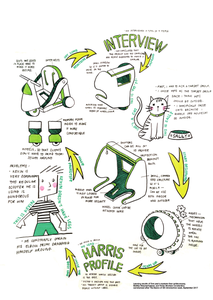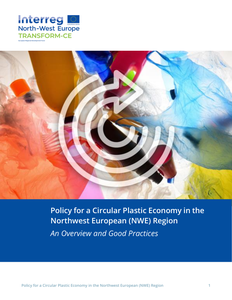Concerns about the negative consequences of the excessive underpricing of the current arrangement in the initial public offering (IPO) market for the provision of entrepreneurial finance—book building—have led to research into the viability of auctions for IPO pricing and allocation. IPO firms face a trade-off between the benefit of accurate and reliable IPO price discovery and the cost of underpricing. The main aim of this paper was to gain new scientific knowledge about this trade-off by measuring the impact of two key variables on this trade-off: capacity restraint and discount on the auction clearing price. Using controlled experiment methodology in multi-unit uniform price auctions we found that the most capacity-restricted auctions that also offer investors a discount are likely to produce the most accurate and reliable price discovery and consequently, the most predictable auction outcome. There are indications that a discount of 8% may suffice to incentivize investors to reliably contribute to price discovery. The resulting underpricing (and its variability) of these auctions is likely to be significantly lower than if book building would be used to price and allocate IPOs. Technological innovation in the IPO market through the application of recent advances in data science, experimental economics and artificial intelligence allows for the optimization of IPO mechanisms and crowdfunding platforms which in turn improves the access to equity required for entrepreneurial finance.
DOCUMENT

This case study describes a special edition of the European Project Semester at the course Sustainable Packaging Design and Innovation at the Faculty of Industrial Design Engineering at The Hague University of Applied Sciences (Fall Semester 2017). In this special edition, unique cooperation took place between 12 parties. The parties were three research institutes, six universities, and three companies. Some parties have developed an educational module focused upon sustainable and circular packaging design, including the use of a dedicated tool for life cycle assessment. This module was embedded in the regular EPS. At The Hague University of Applied Sciences, an international class of 16 students worked in four teams on a real-life design assignment. They were offered a wide range of lectures, workshops, pitches, and presentations. The chapter concludes with a review of the followed processes and organizational, managerial, and practical concerns. Although run as a unique edition, all parties discuss to continue this cooperation.
DOCUMENT

Het Project TBTOP is een samenwerkingsproject tussen onderwijsinstellingen voor VMBO, MBO en HBO om het techniek onderwijs samen met bedrijven in de regio aantrekkelijker te maken voor studenten, docenten en bedrijfsleven. Dit wil men realiseren door meer praktijknabij onderwijs te ontwikkelen. Ook wil men de vak-disciplinaire visie op het beroep verbreden en studenten kennis laten maken met doorstroommogelijkheden in studie en beroep. Een groep projectleiders uit de verschillende onderwijsinstellingen draagt zorg voor de voortgang van de vernieuwingsprocessen en verankering in het onderwijs. De betrokkenen hebben samenwerking in een nieuwe context ervaren namelijk samenwerking met de beroepspraktijk, samenwerking met andere vakdisciplines en samenwerking met andere onderwijsinstellingen (en dus onderwijsniveaus). Het samenwerken aan praktijkopdrachten in multidisciplinaire TOPteams is een nieuw proces geweest voor docenten en bedrijfsmedewerkers. Dit proces heeft, los van de concrete producten en processen, een cultuurverandering in het onderwijs in gang gezet. Groepen docenten zijn getriggerd om over de grenzen van hun vakgebied te kijken en naar het onderwijs te kijken, vanuit de bril van de praktijk. Hiermee hebben de betrokkenen zich geprofessionaliseerd. In de film die gemaakt is naar aanleiding van dit project, vertellen betrokkenen hun ervaringen binnen de nieuwe samenwerkingsvormen. De film is interactief en op verschillende momenten in te stappen.
MULTIFILE

In het project ‘Landbouw in Klimaatrobuuste Beeklandschappen’ (SIA PVG.DZ21.03.004) zijn het bodem- en watersysteem, het agrarisch perspectief, de verdienmogelijkheden binnen dit landschap en de rol van governance uitgewerkt. De methodieken zijn aan de hand van drie verschillende casusgebieden opgesteld, getest en repliceerbaar gemaakt en hebben verschillende producten en rapportages opgeleverd. De gebruikte casusgebieden zijn het Koningsdiep (FR), de Buulder Aa (NB) en het Vechtdal (OV), drie verschillende maar wel vergelijkbare gebieden op zandgronden waar de aanwezigheid van lokale laagtes en hoogtes voor complexe dynamiek zorgen op het gebied van droogte en wateroverlast. Dit deelbestand is onderdeel van het grotere geheel. Houd er rekening mee dat deze informatie is gepubliceerd op 28-02-2025 en onderhevig kan zijn aan wijzigingen.
DOCUMENT

We zijn allemaal - meer of minder - bezig met verduurzaming. Elk op onze eigen manier. Maar: samen weten we veel meer dan alleen. De slimste aanpak is om als ondernemers, private en publieke partijen samen op te trekken. Dat was de centrale boodschap van het seminar Verduurzaming bedrijventerreinen dat Fontys op maandag 8 mei samen met VNO-NCW, PVB Nederland en provincie Utrecht organiseerde.
DOCUMENT

Lezing gehouden tijdens congres "Wie beslist er over wat: congres over subsidiariteit en het middenbestuur in de 21e eeuw" op 19 december 2005.
DOCUMENT

This report describes the Utrecht regio with regard to sustainability and circular business models.
DOCUMENT

Het thema van het VNG-jaarcongres 2018 in Maastricht is ‘Over grenzen’. Nederlandse politici en bestuurders moeten grenzen durven te verleggen. Niet zelden is dit een landsgrens, die in de regio heel wat dichter bij is dan in Den Haag. Meer dan de helft van de provincies grenst aan het buitenland en landsgrensoverschrijdende samenwerking is dus aan de orde van de dag. Nationale of EU-regels en subsidies kunnen helpen beleidsdoelstellingen te verwezenlijken die op regionaal of lokaal niveau belangrijk worden gevonden. Maar grensoverschrijdend beleid stuit in de praktijk ook op andere, ‘Europese’ grenzen. Zo ontdekt een ondernemer te laat dat Duitsland EU-richtlijnen anders interpreteert dan Nederland. Dan weer stelt nieuwe Brusselse wetgeving aanbestedingseisen, of hebben Europese besluiten een negatieve impact op grensregio’s of op de visserij. Bij onbegrijpelijke, onuitvoerbare of botsende regels wordt er een spanning ervaren tussen Europees gemeenschappelijk beleid en Nederlandse decentralisatie. Dit essay focust op de grip op die Europese Unie (EU) als bestuurlijke uitdaging. doi: 10.5553/Bw/016571942018072002005 LinkedIn: https://www.linkedin.com/in/mendeltje/
DOCUMENT

Industrial Design Engineering [Open] Innovation (IDE) is a 3-year, English taught, VWO entry-level, undergraduate programme at The Hague University of Applied Sciences (THUAS). The IDE curriculum focuses on the fuzzy front end of (open) innovation, sustainable development, and impact in the implementation phase of product-service design. The work field of Industrial Design Engineering and Open Innovation, like many other domains, is growing increasingly more complex (Bogers, Zobel, Afuah, Almirall, Brunswicker, Dahlander, Frederiksen, Gawer, & Gruber, 2017). Not only have the roles of designers changed considerably in the last decades, they continue to do so at increasing speed. Therefore, industrial design engineering students need different and perhaps more competencies as young professionals in order to deal with this new complexity. Moreover, in our transitional society, lifelong learning takes a central position (Reekers, 2017). Students need to give their learning path direction autonomously, in accordance with their talents and interests. IDE’s Quality & Curriculum Committee (QCC) realized in 2015 there is too much new knowledge to address in a 3-year programme. Instead, IDE students need to learn how to become temporary experts in an array of topics, depending on the characteristics of each new project they do (see Textbox 1). The QCC also concluded that more than just incremental changes to the current curriculum were needed; thus, the idea for a flexible, choice-based semester approach in the curriculum was born: ‘Curriculum M’ (Modular). A co-creational approach was applied, in which teaching staff, students, alumni, prospective students, industry (including the (international) social profit sector), and educational advisors collaborated to develop a curriculum that would allow students to become not just T-shaped (wide basis, one expertise) professionals, but U- or W-shaped professionals, with strong links to other disciplines.
DOCUMENT

This document combines four reports on existing regional business support programmes for inclusion or understanding of circular economy (CE) objectives, deliverable DT3.1.2 from the transform-CE project. Besides a general overview on national and regional level, the focus is on a selection of national and regional programmes aimed at the plastics industry. After explaining the format to structure the programmes, the results for the four regions are presented: Greater Manchester (UK), Rhineland Palatinate and North-Rhine Westphalia (DE), Wallonia (BE), Central Netherlands (NL).
MULTIFILE
